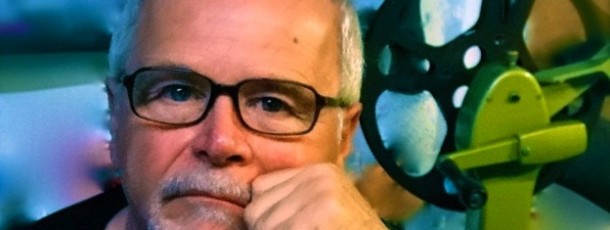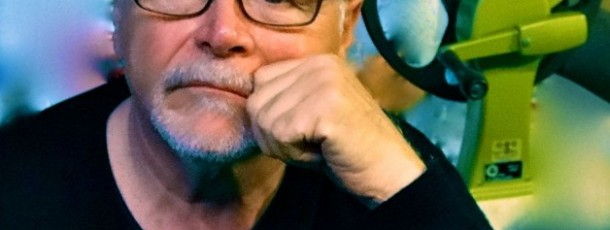Q&A with Ron Merk of Premier Pictures International Inc.
Q&A with Ron Merk about the unidentified family’s footage featured here:
How did you come across this footage?
This footage was being offered for sale on eBay, where we look every day to find items to add to our expansive collection of culturally and historically significant home movies (our preservation initiative on which we’re working with The Academy of Motion Picture Arts and Sciences Film Archive). Because films that show San Francisco are in high demand, as are any films that feature celebrities or unique events, the bidding was very spirited for this material, and we made a decision to buy it, no matter the cost. Films of Asian families in San Francisco during the year of this film (1939) are very rare. This film is also 16mm Kodachrome, which is an amazing film stock that has long term survival of it’s color.
What are some of the things that you look for in identifying parts of this archival footage?
As part of our preservation inspection, we look at the information that comes from the seller or donor. In this case, all we had was that this was a San Francisco-based Japanese family in 1939. We then looked at the film can for markings. There were none. The film, itself, offered only one clue, the year the film stock was made. On the edge of most film stocks are little symbols, and these told us the year was 1939. We also look for names or signs or little title cards in the film, that might help in identifying who is in the film. In this case, there were none. So, what we have is a mystery to solve. This is why we brought the film to CAAM, to see if there was some means of reaching out to the community to find the family whose descendants might want to be re-united with these memories. The film was shown last September 26th at a CAAM show and exhibit at the Asian Art Museum. We posted some photos and contact information in one of the galleries, but to date, we have not found the family. So anything that can be done to get the photos out to the world, and ask people to contact us, would be a great help in reuniting these films with the family. They can e-mail me directly at ron@indieplex.org.
Was there anything that stood out to you in this reel of footage?
There were a number of things that made this footage unique, in my opinion. First of all, it’s in perfect condition. It’s San Francisco, 1939, and it features a Japanese American family. They were most likely quite well-off financially, and very much absorbed into American life. The first half of the film is them celebrating Christmas at home, complete with a Christmas tree, gifts and a table set for the holiday. Second, they were extremely well-dressed. They also had Caucasian and Chinese guests at their dinner. The second part is the family visiting the 1939 Fair on Treasure Island. Again, dressed in all their finery, and enjoying the flower exhibition. I have seen no other films of Asians at this fair. Also keep in mind that just a few years after the date of this film, Japanese families were forcibly detained as enemy aliens in dreadful camps like Manzanar. It would be interesting to learn what happened to this apparently quite affluent family.
How often do you come across unidentified home movies as a film preservationist?
Most home movies that we find, buy or locate are without much in the way of written history or provenance. So, we’re often solving the mystery of the film’s subject matter and source.
How do families get separated or lose their home movies? Is this common?
When families come to us, they are much more helpful with information. But often, they can only tell us, “my grandfather shot these films, ” and that’s about all we get from them, unless they can identify the people in the film. Now here’s the scary part of what’s happening to home movies. When the people who made them die, often they are sold at garage sales to dealers, or thrown away. So much is being lost because of this. Then there’s the whole myth of saving them by digitizing them. People take their films to Costco or some transfer service, make DVDs and then dispose of the film. That film is the only thing that will last for many years. DVDs….well, no one knows for sure how long they last. Equipment and technology changes, so much will be obsolete in 5 years. That means losing films and memories. The films, if properly preserved in a temperature and humidity controlled vault, should last 100 years or more. We have that much history with film, and that’s the basis of that assumption. So, if people want to “get rid of those old films” because it’s too hard to project them, or they don’t want them any more, they need to make some attempt to get them to a professional archive and ask for help. That’s why we began our Preservation Project Partnerships, and have saved more than 400 collections so far.
What are some of the steps that you or I can take in reuniting families with their “lost” footage?
Re-uniting families with their lost memories is a new area of endeavor for us. The 1939 Japanese family footage is our first attempt at doing this, and so far, we’ve been un-successful. Once the connections between film and memories are lost, these images become ghosts. It’s our hope that we can bring the images back to life, and re-unite them with the families whose lives are portrayed in the films. So, we are reaching out and asking people to look at the film or photos, and tell us if they recognize anyone in the film (made 75 years ago) and if any of that family’s descendants are still around. We want to talk to them, maybe even videotape them talking about the people who appear in this amazing piece of history, and let us know what happened to then and the family. We would then add this information to the material, and make it available for the world to see again.

